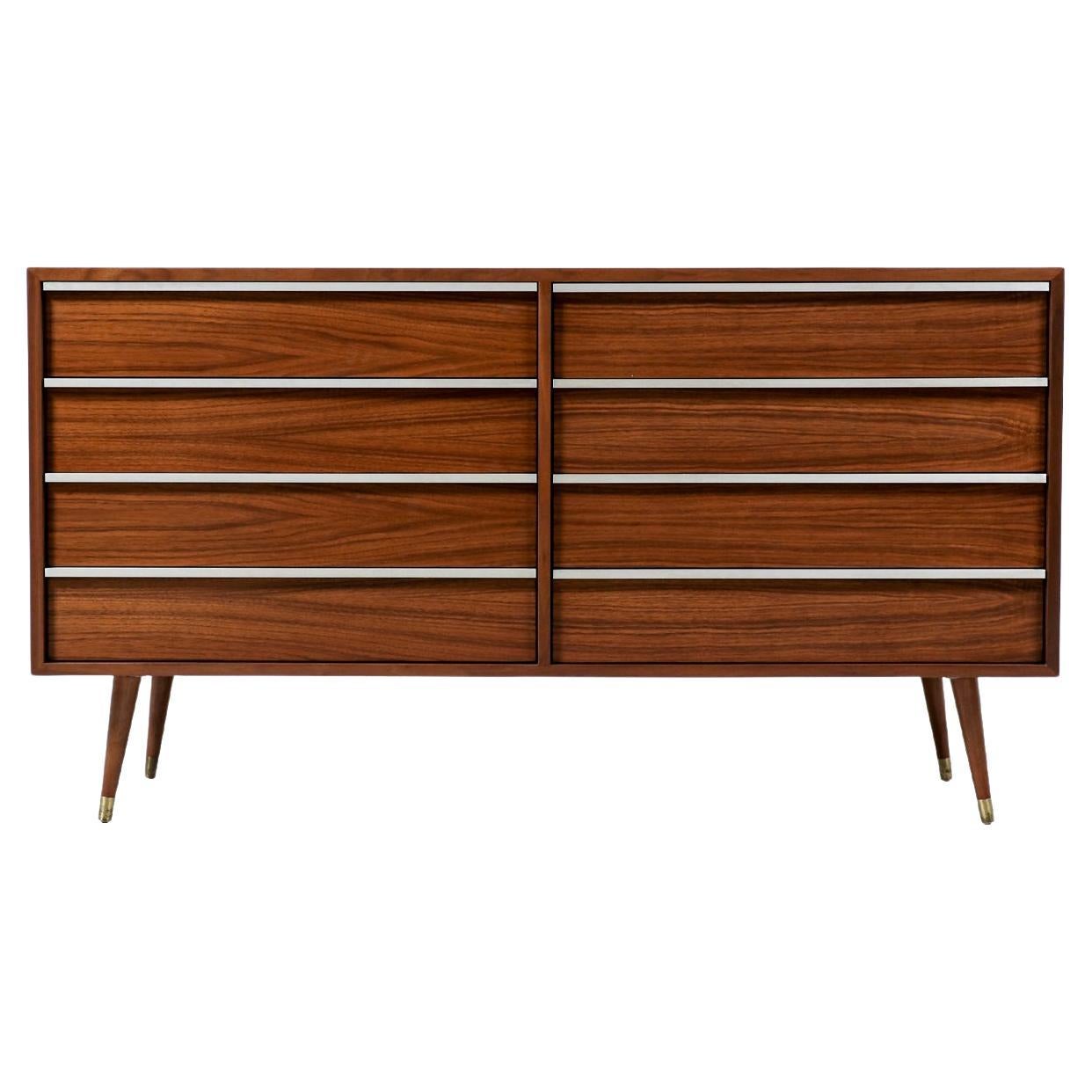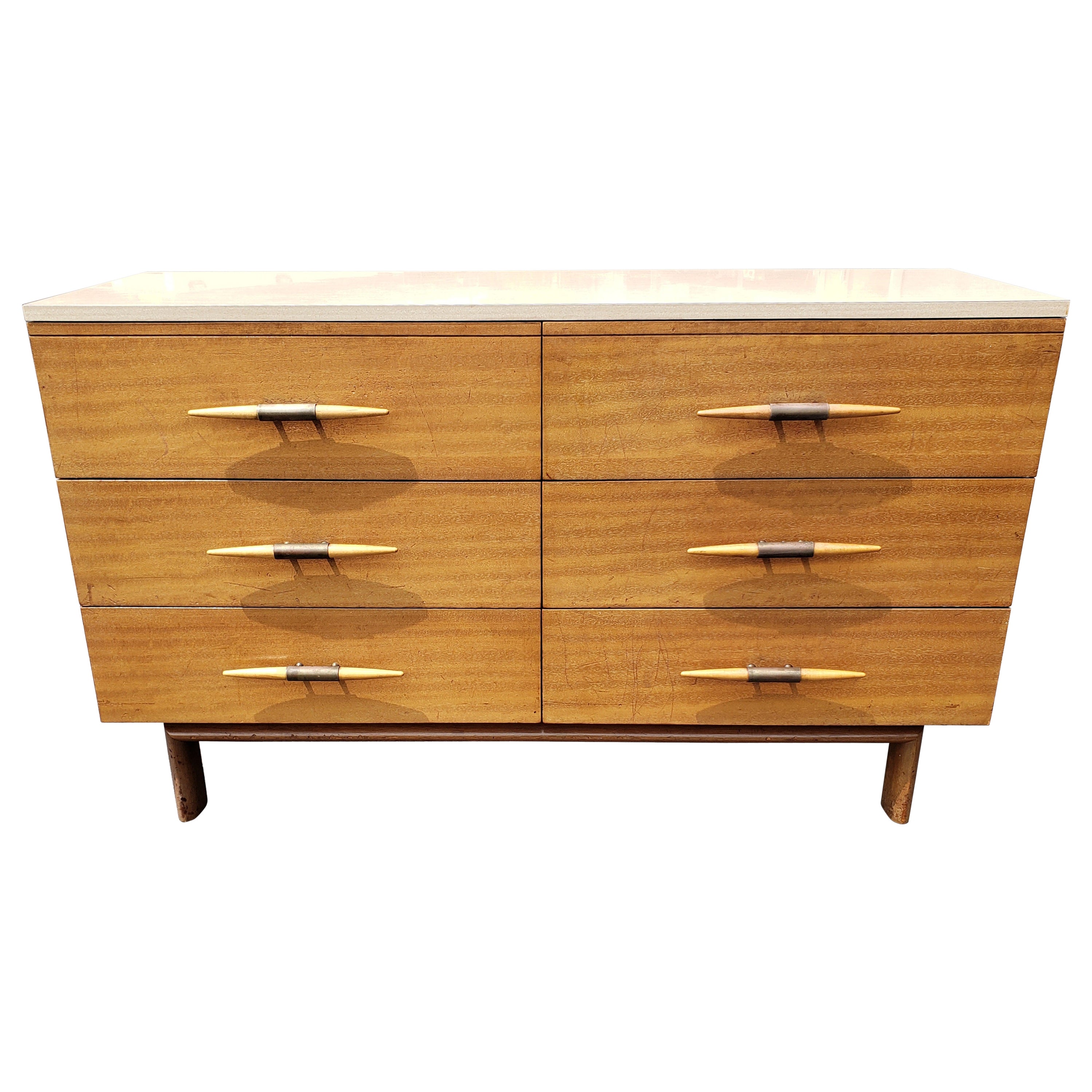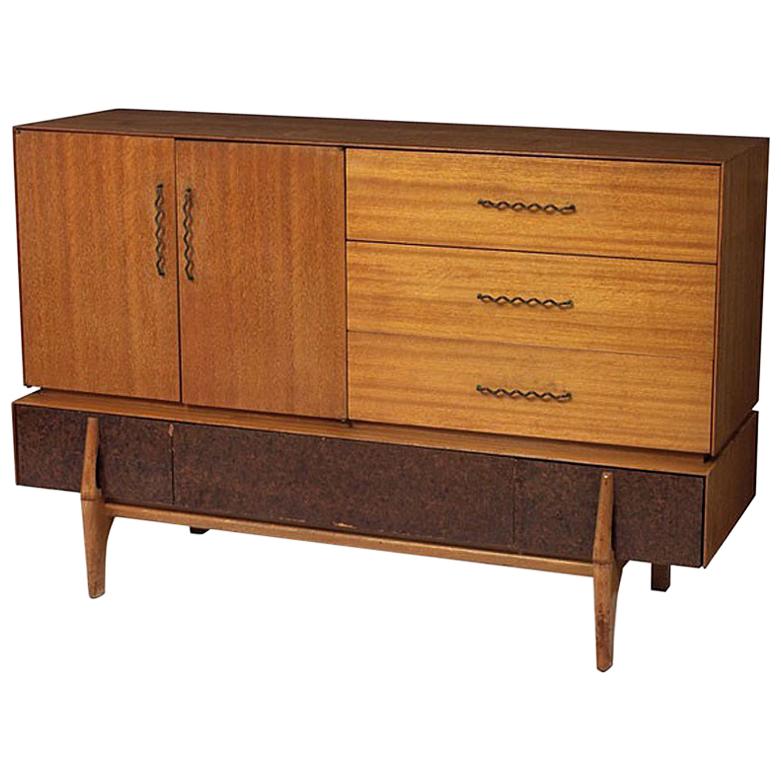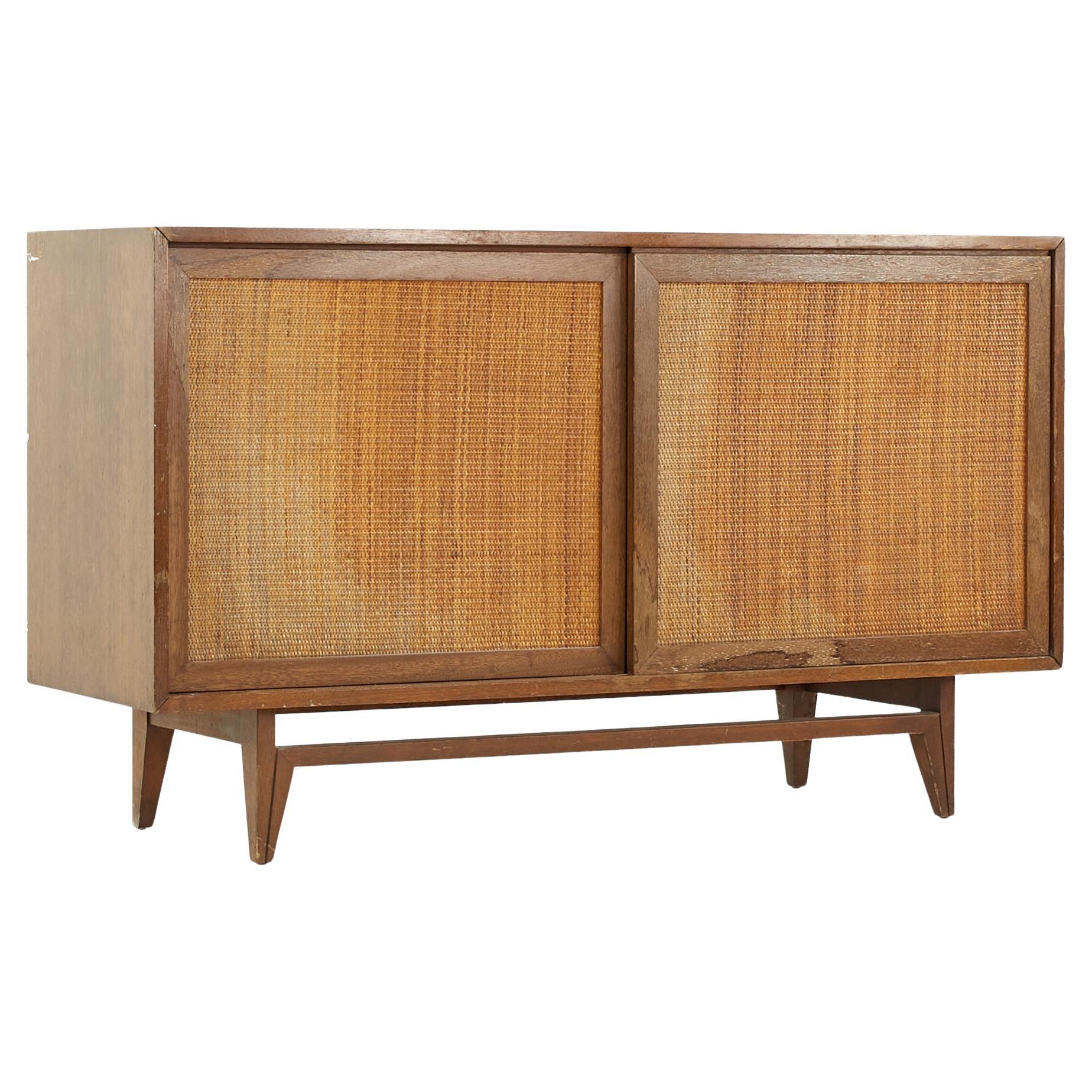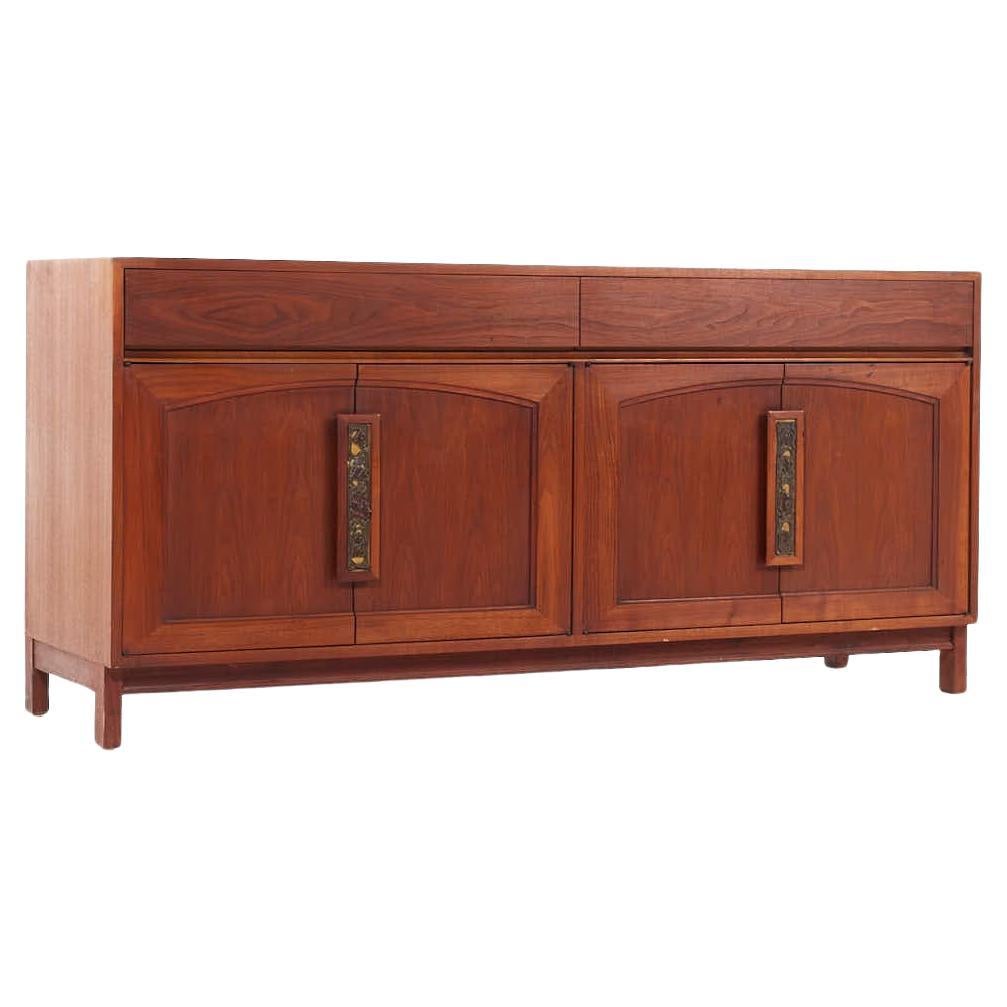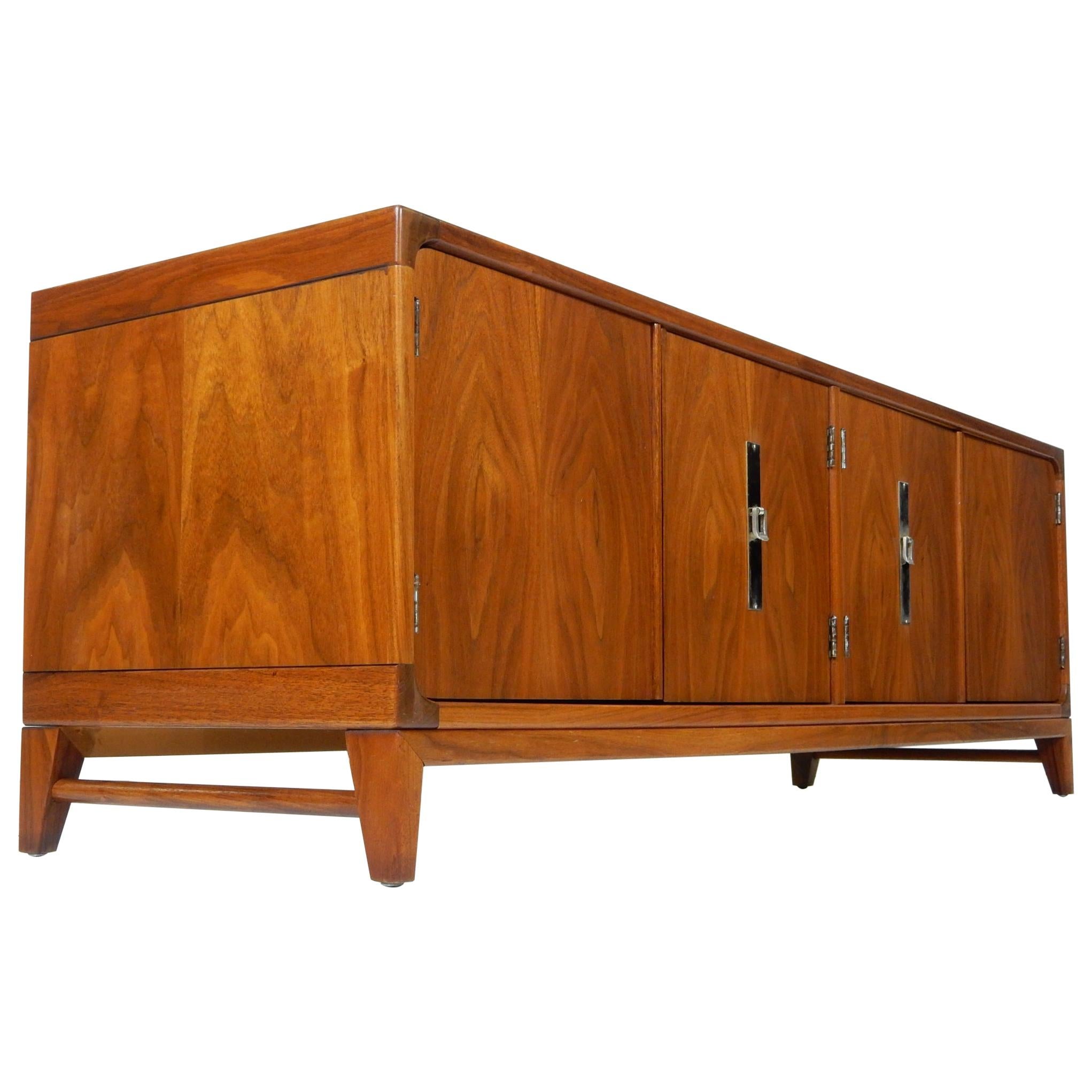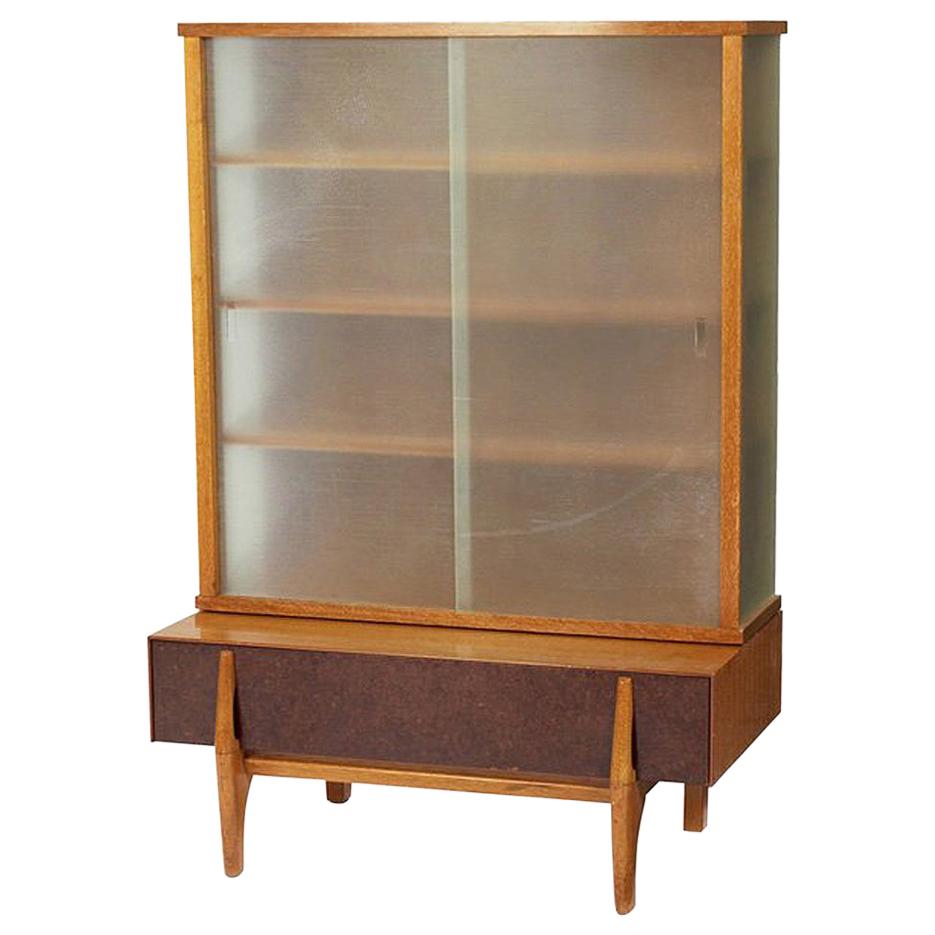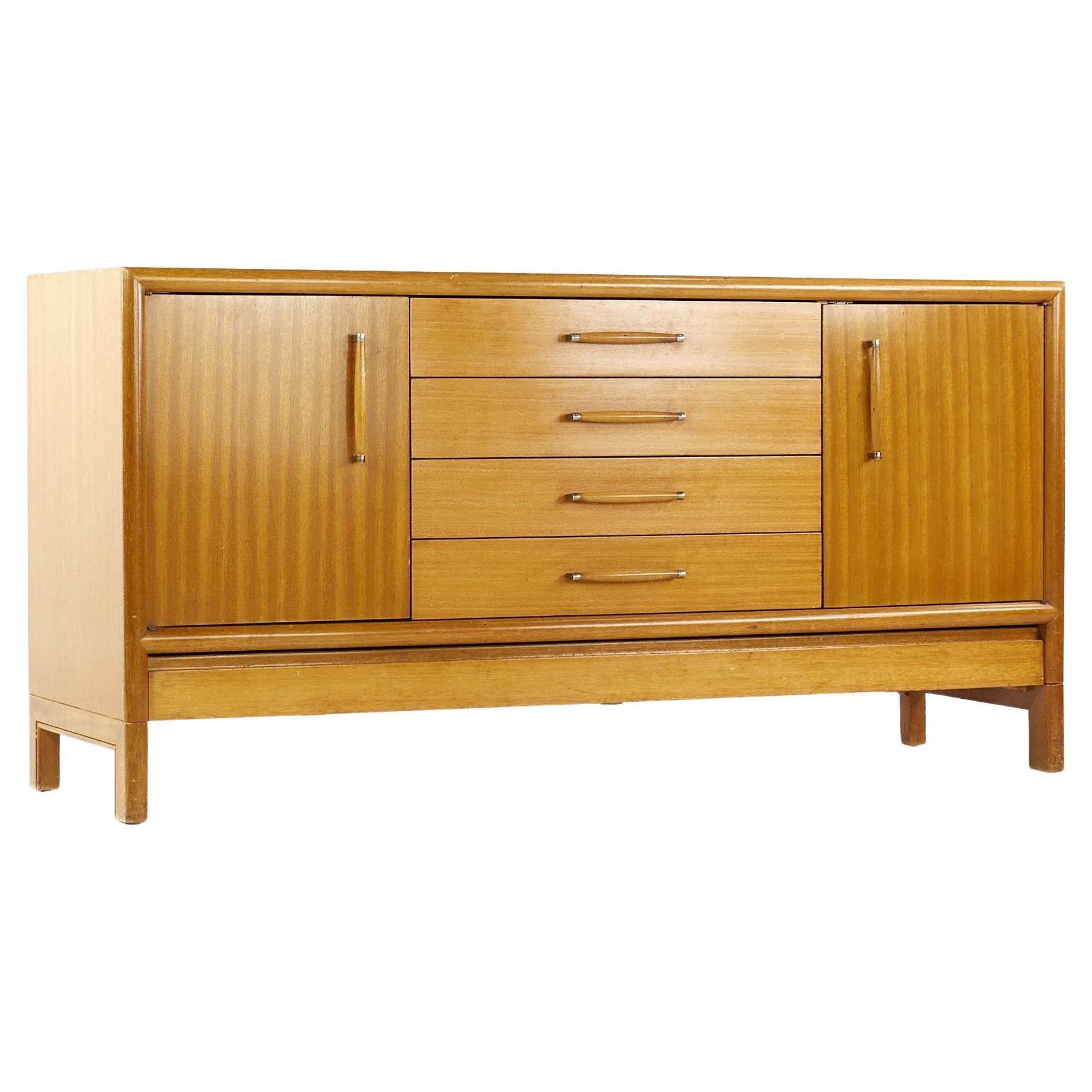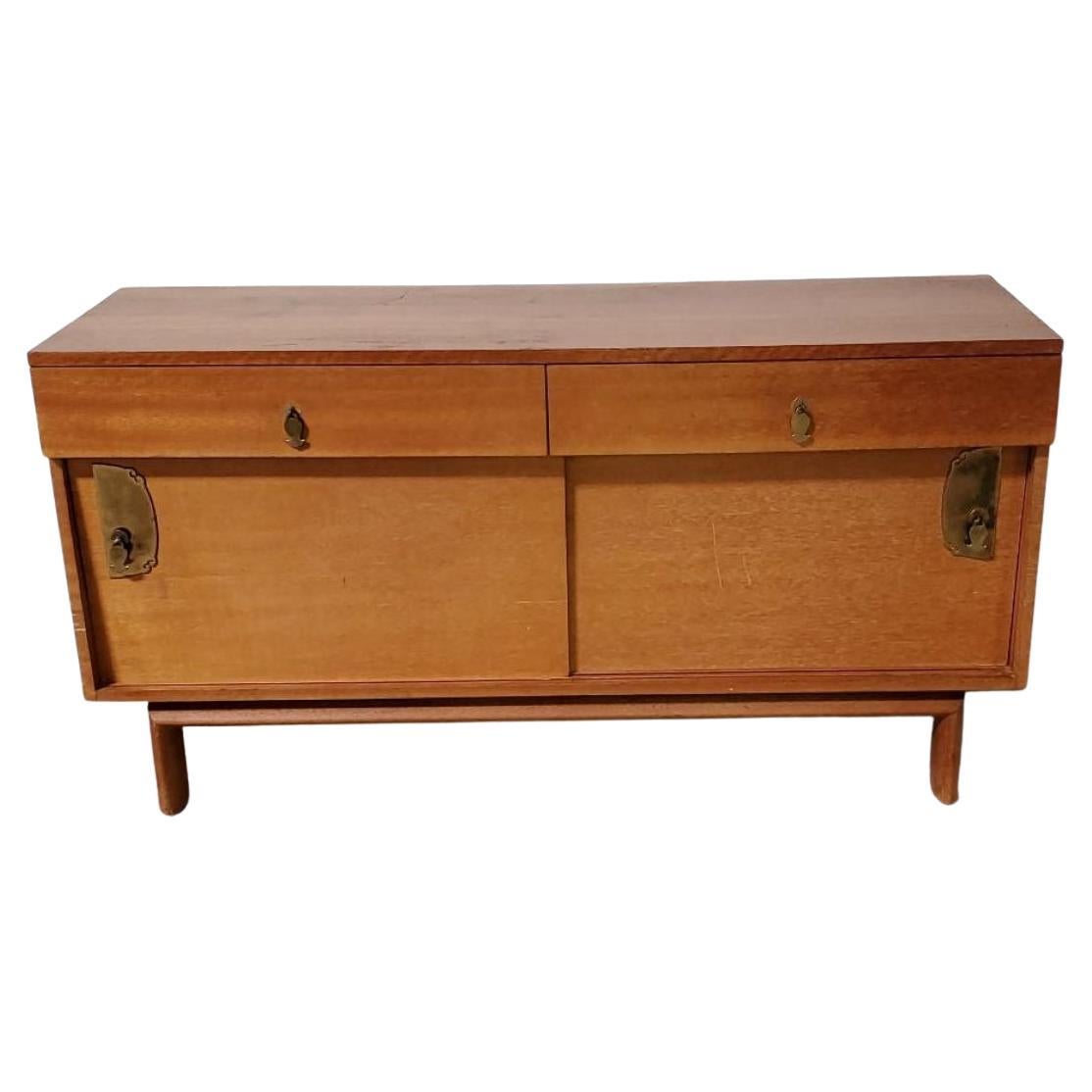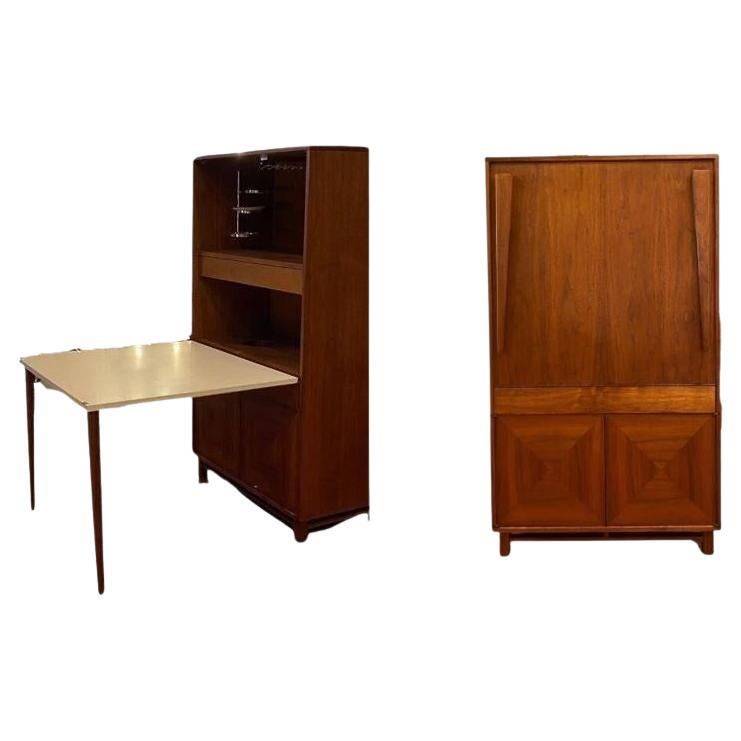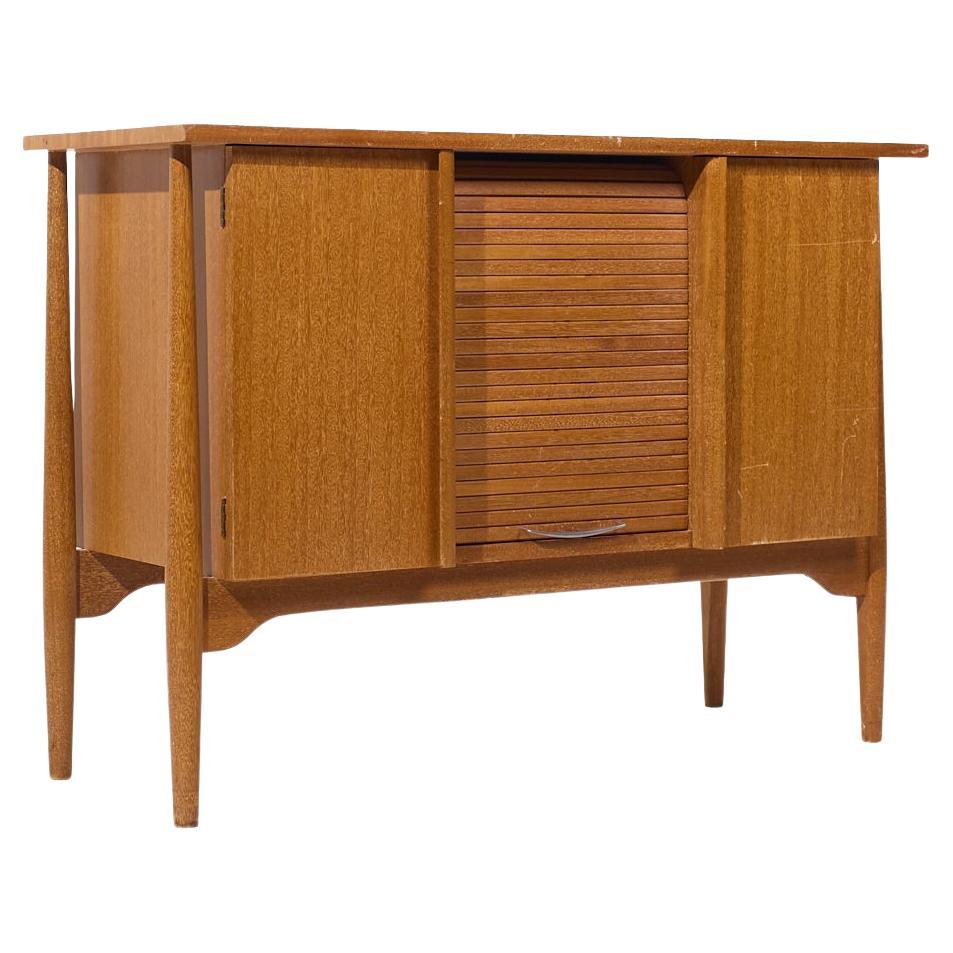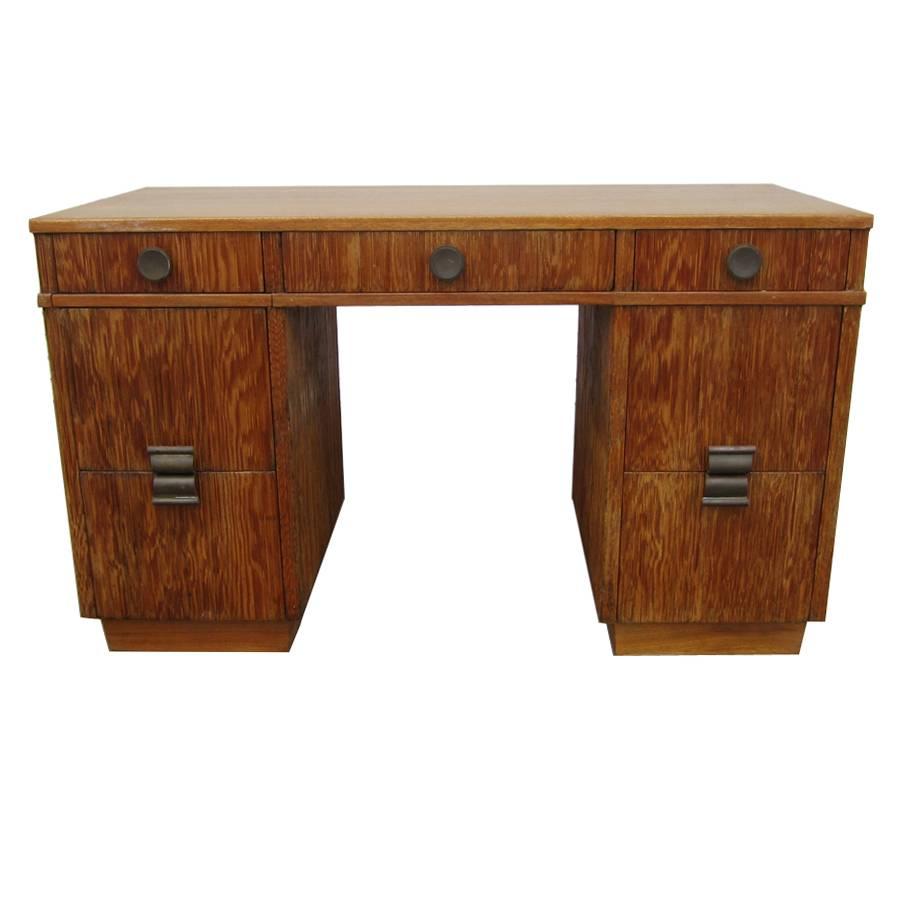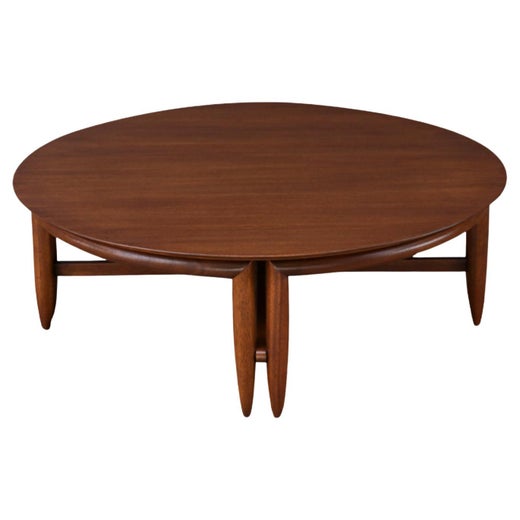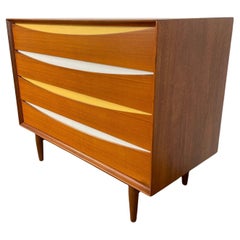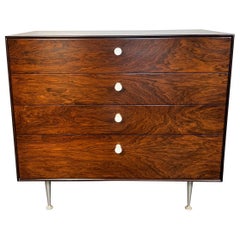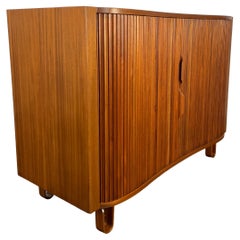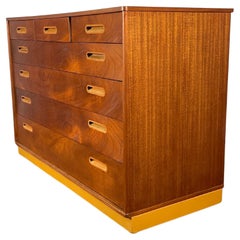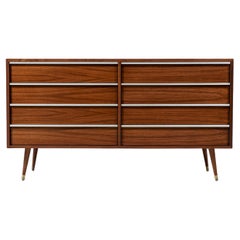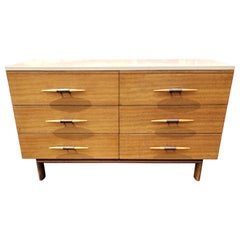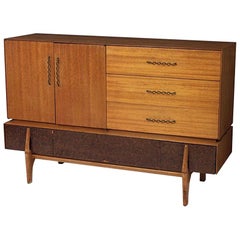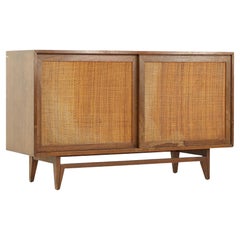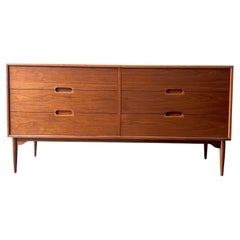
John Keal Six Drawer Dresser for Brown Saltman
View Similar Items
John Keal Six Drawer Dresser for Brown Saltman
About the Item
- Creator:John Keal (Designer)
- Dimensions:Height: 30 in (76.2 cm)Width: 19 in (48.26 cm)Depth: 60 in (152.4 cm)
- Style:Mid-Century Modern (Of the Period)
- Materials and Techniques:Walnut,Lacquered
- Place of Origin:
- Period:
- Date of Manufacture:Circa 1960's
- Condition:Refinished. Wear consistent with age and use. we have restored this dresser to excellent vintage condition. All drawers slide slowly and the case is structurally sound. We have finished the case piece in a UV protecting lacquer.
- Seller Location:San Diego, CA
- Reference Number:1stDibs: LU6417242136132
John Keal
At a time when many furniture makers were turning to cheaper materials for mass production, mid-century modern designer John Keal didn't shy away from utilizing quality woods in his work, like mahogany and walnut to create his coffee tables, cabinets and benches.
While little is known about Keal, he was part of a powerhouse group that collaborated with Los Angeles furniture manufacturer Brown-Saltman in the 1940s and ‘50s. Other designers who had partnered with the firm during the mid-20th century included Greta Magnusson Grossman, Paul Frankl, Paul Laszlo, and Gilbert Rohde, a New York City-born designer who would help legendary Michigan furniture manufacturer Herman Miller avert financial disaster during the Great Depression.
Brown-Saltman was established in 1923 and initially specialized in reproductions of furniture in period styles. When cofounder David Saltman met Frankl, the firm had discontinued its Early California collection and was producing modern furniture.
The Austrian-born Frankl was already a big name in decorating in California in the late 1930s — his clients were Hollywood movie stars who were drawn to pieces such as his Art Deco-style Skyscraper series and other biomorphically shaped designs that showed the influence of Chinese and Japanese forms (Brown-Saltman’s offerings were frequently demonstrative of Asian influences). Frankl had become interested in producing inexpensive furniture for middle-class consumers, and his 1940s-era collaboration with Brown-Saltman was a success — print advertisements touted his name as well as the fact that these furnishings, which drew on the clean lines of chrome-framed Bauhaus pieces but instead integrated organic materials, were intended for modern homes.
Keal’s work also fit snugly into what we now call California modernism, which derived from the Bauhaus and International Style movements, and revolutionized the way we build homes today, not only in the Golden State but across the globe. Keal created sleek end tables in walnut and topped with enameled copper and upholstered low-profile dining chairs framed in bleached mahogany for Brown-Saltman as well as other West Coast mid-century brands such as Glenn of California and Modeline.
Find vintage John Keal seating, storage pieces and tables on 1stDibs.
More From This Seller
View AllVintage 1950s Danish Scandinavian Modern Dressers
Teak
Vintage 1950s American Mid-Century Modern Dressers
Aluminum
Vintage 1950s American Mid-Century Modern Dressers
Mahogany
Vintage 1950s American Mid-Century Modern Dressers
Mahogany
Vintage 1950s American Mid-Century Modern Dressers
Metal
Vintage 1950s Italian Mid-Century Modern Dining Room Chairs
Leather, Walnut
You May Also Like
Vintage 1950s American Mid-Century Modern Dressers
Aluminum, Brass
Mid-20th Century American Mid-Century Modern Dressers
Abalone, Formica, Hardwood, Mahogany
Vintage 1950s American Mid-Century Modern Buffets
Brass
Vintage 1970s American Mid-Century Modern Dressers
Cane, Wood
Vintage 1970s American Mid-Century Modern Credenzas
Walnut
Mid-20th Century Mid-Century Modern Credenzas
Wood
